In the system shown in figure, the two springs S1andS2 have force constant k each. Pulley, springs and strings are all massless. Initially, the system is in equilibrium with spring S1 stretched and S2 relaxed. The end A of the string is pulled down slowly through a distance L. By what distance does the block of mass M move?
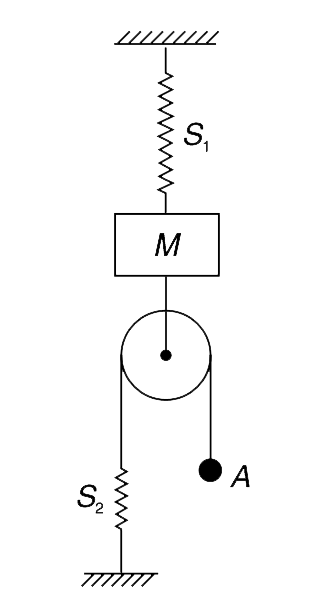
The correct Answer is:2L5
Step by step video, text & image solution for In the system shown in figure, the two springs S_(1) "and" S_(2) have force constant k each. Pulley, springs and strings are all massless. Initially, the system is in equilibrium with spring S_(1) stretched and S_(2) relaxed. The end A of the string is pulled down slowly through a distance L. By what distance does the block of mass M move? by Physics experts to help you in doubts & scoring excellent marks in Class 11 exams.
Updated on:21/07/2023Topper's Solved these Questions
Similar Questions
The fig. shows an infinite tower of identical springs each having force constant k. The connecting bars and all springs are massless. All springs are relaxed and the bottom row of springs is fixed to horizontal ground. The free end of the top spring is pulled up with a constant force F. In equilibrium, find
(a) The displacement of free end A of the top spring from relaxed position.
(b) The displacement of the top bar B1 from the initial relaxed position.
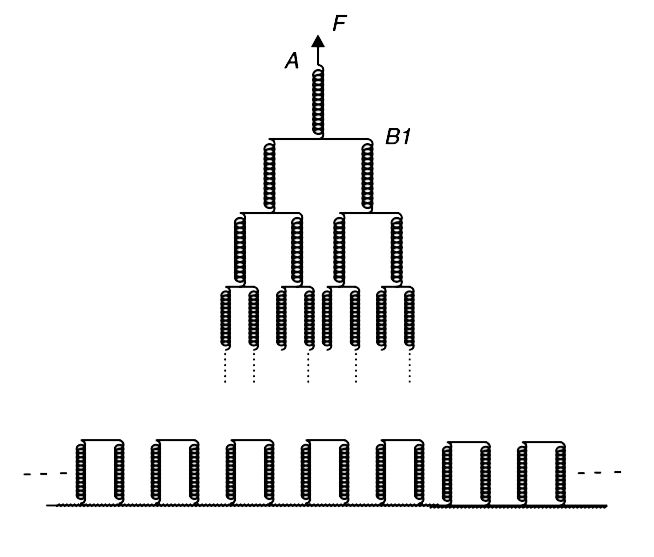
View SolutionIn the system shown in the figure the string, springs and pulley are light. The force constant of the two springs are k1=k and k2=2k. Block of mass M is pulled vertically down from its equilibrium position and released. Calculate the angular frequency of oscillation. The top surface of the block (represented by line AB) always remains horizontal.
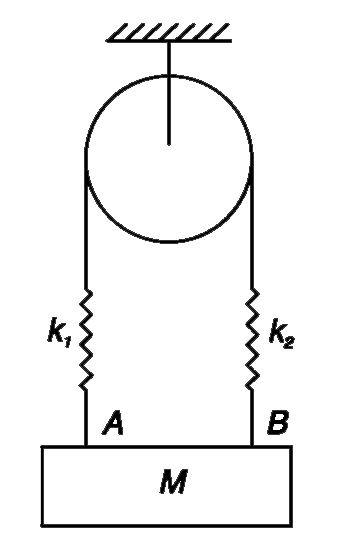
View Solution
Knowledge Check
In the arrangement shown in figure pulleys and strings are ideal m1>m2. S is spring balance which is itself massless. The reading of balance will be
 Ag(m1−m2)B12(m1+m2)gCm1m2gm1+m2D2m1m2gm1+m2
Ag(m1−m2)B12(m1+m2)gCm1m2gm1+m2D2m1m2gm1+m2The system shown in the following figure is in equilibrium and at rest. The spring and string are massless. Now, the string is cut. The acceleration of mass 2m and m, just after the string is cut, will be
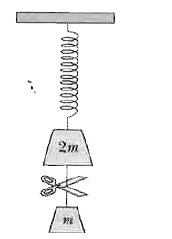 Ag/2 upwards, g downwards.Bg upwards, g/2 downwards.Cg upwards, 2 g downwards.D2g upwards, g downwards.
Ag/2 upwards, g downwards.Bg upwards, g/2 downwards.Cg upwards, 2 g downwards.D2g upwards, g downwards.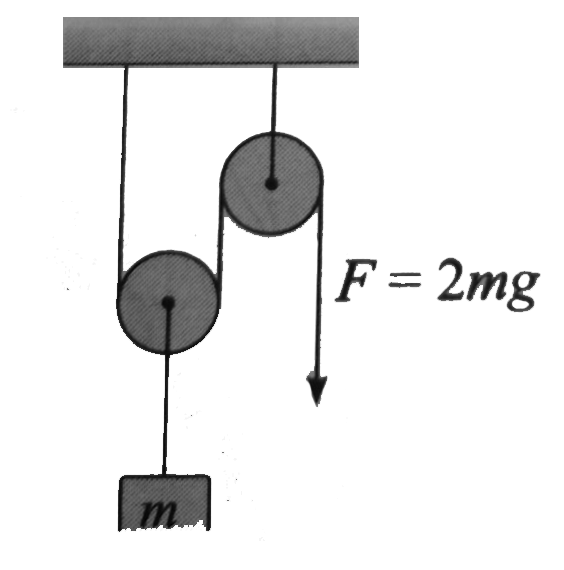
In the shown mass pulley system, pulleys and string are massless. The one end of the string is pulleed by the force F=2mg. The acceleration of the block will beAg2B0CGreater than →vD3g
A block of mass 10 kg is hanging over a smooth and light pulley through a light string and the other end of the string is pulled down by a constant force F. The kinetic energy of the block increases by 20 J in 1 s
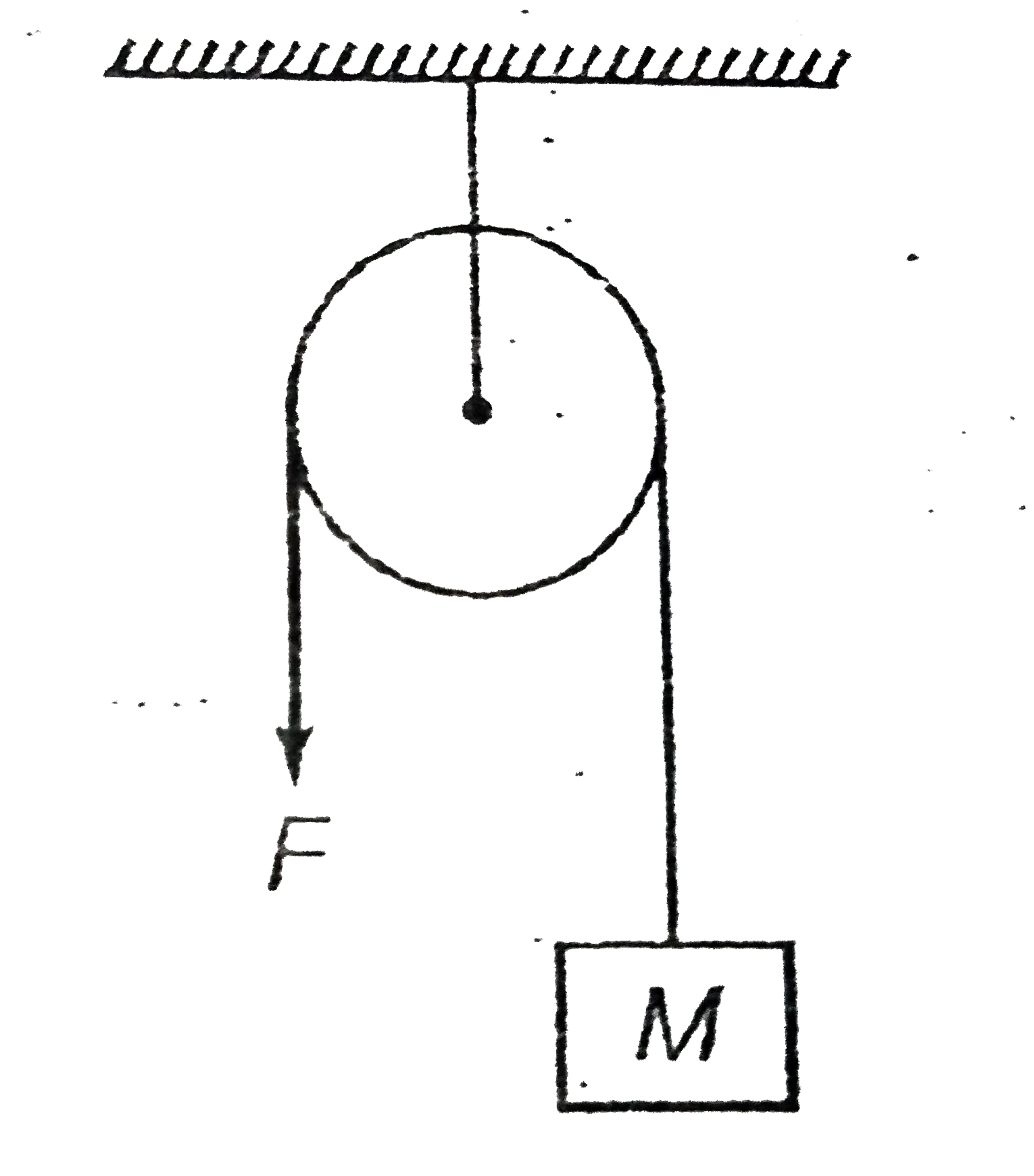
View SolutionIn the system as shown in figure, the blocks have masses m1 and m2, the spring constant is k, coefficient of friction between the block of mass m1 and the surface is μ. The system is released with zero initial speed from the position where the spring is in its natural length.
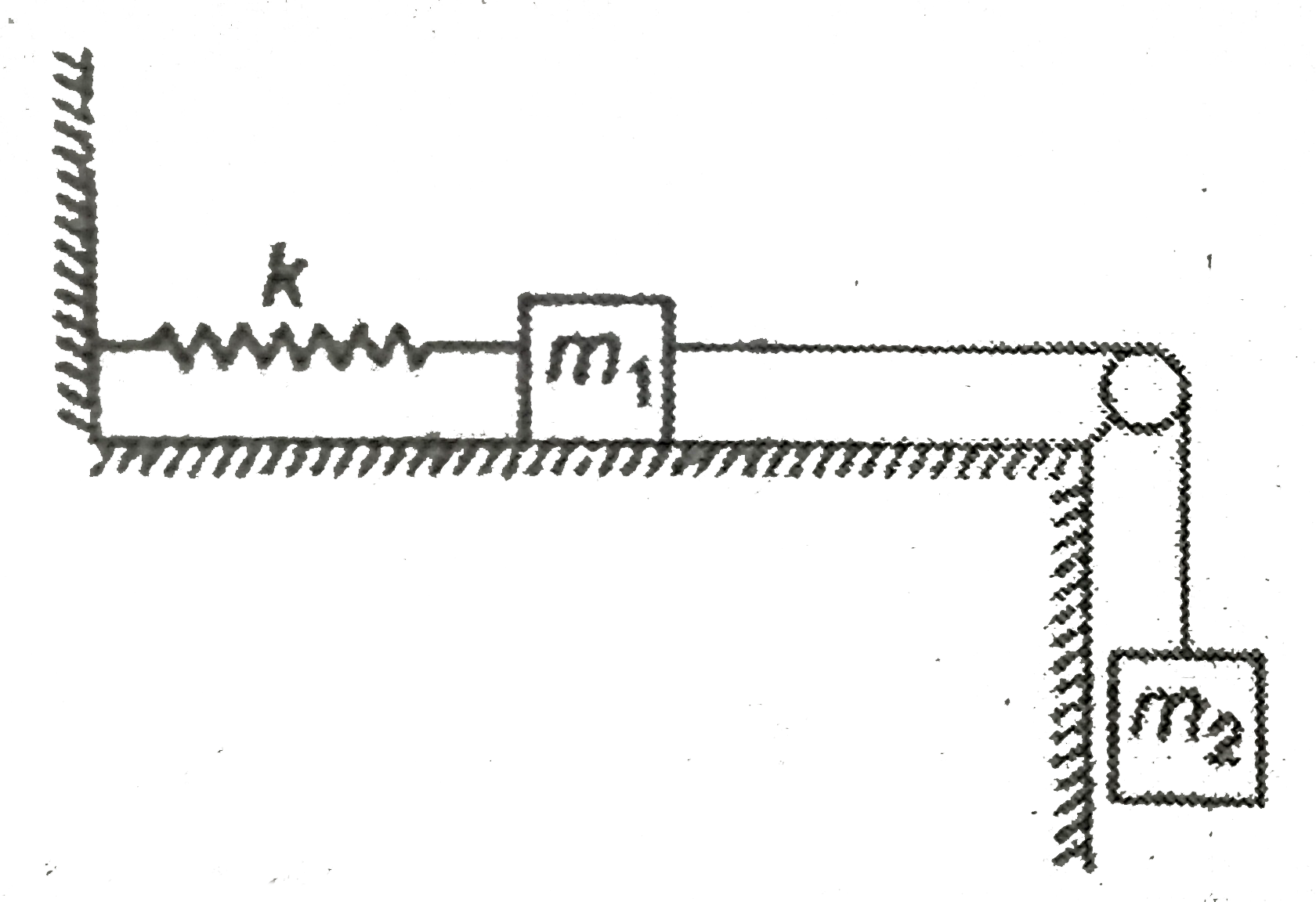
View SolutionSystem shown in fig is in equilibrium and at rest. The spring and string are massless now the string is cut. The acceleration of mass 2m and m just after the string is cut will be:
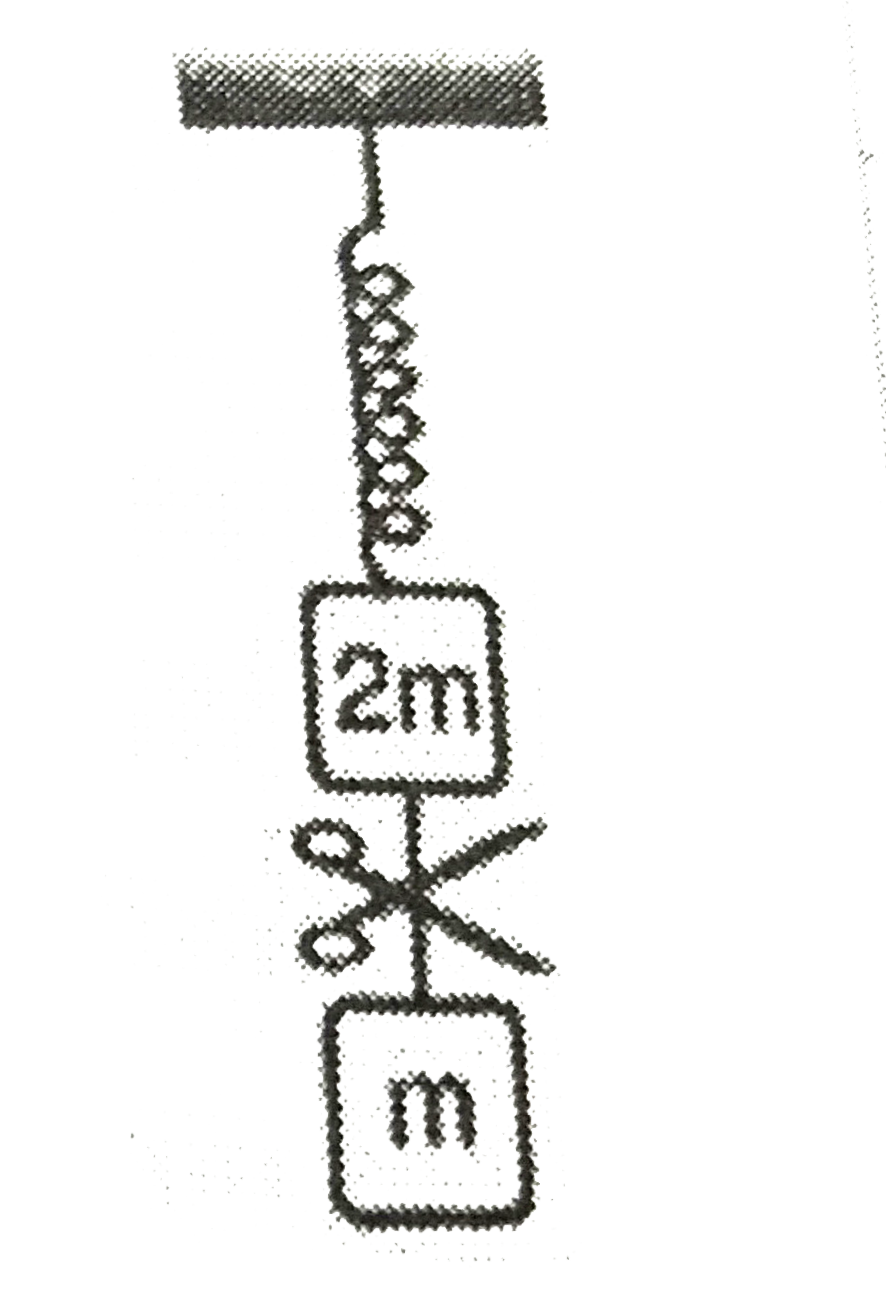
View SolutionIn the arrangements shown, the pulleys, strings and springs are weightless and the systems can move freely without friction The extension of spring in 1 is x1 and that in 2 is x2 Then
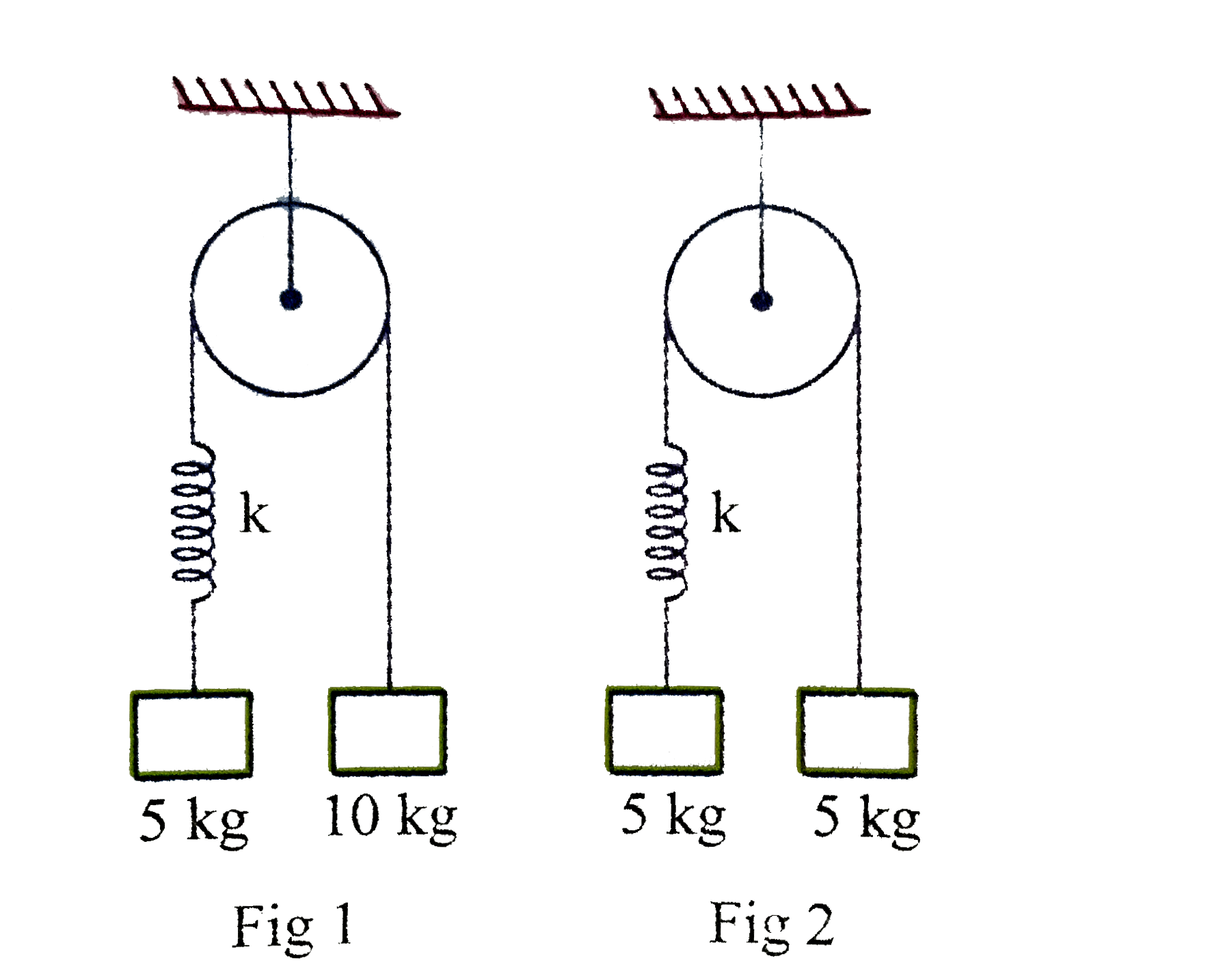 .
.
View SolutionThere are tow identical spring each of spring constant k. here springs, pulley and rods are massless and the block has mass m . What is the extension of each spring at equilibrium?
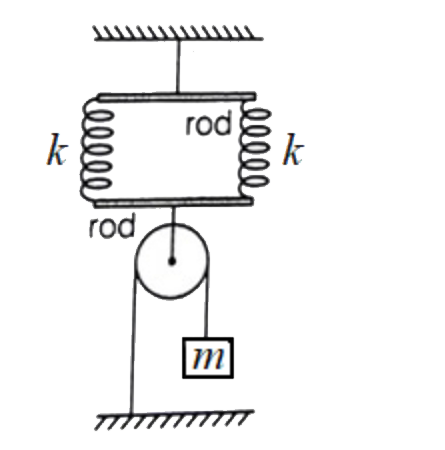
View Solution